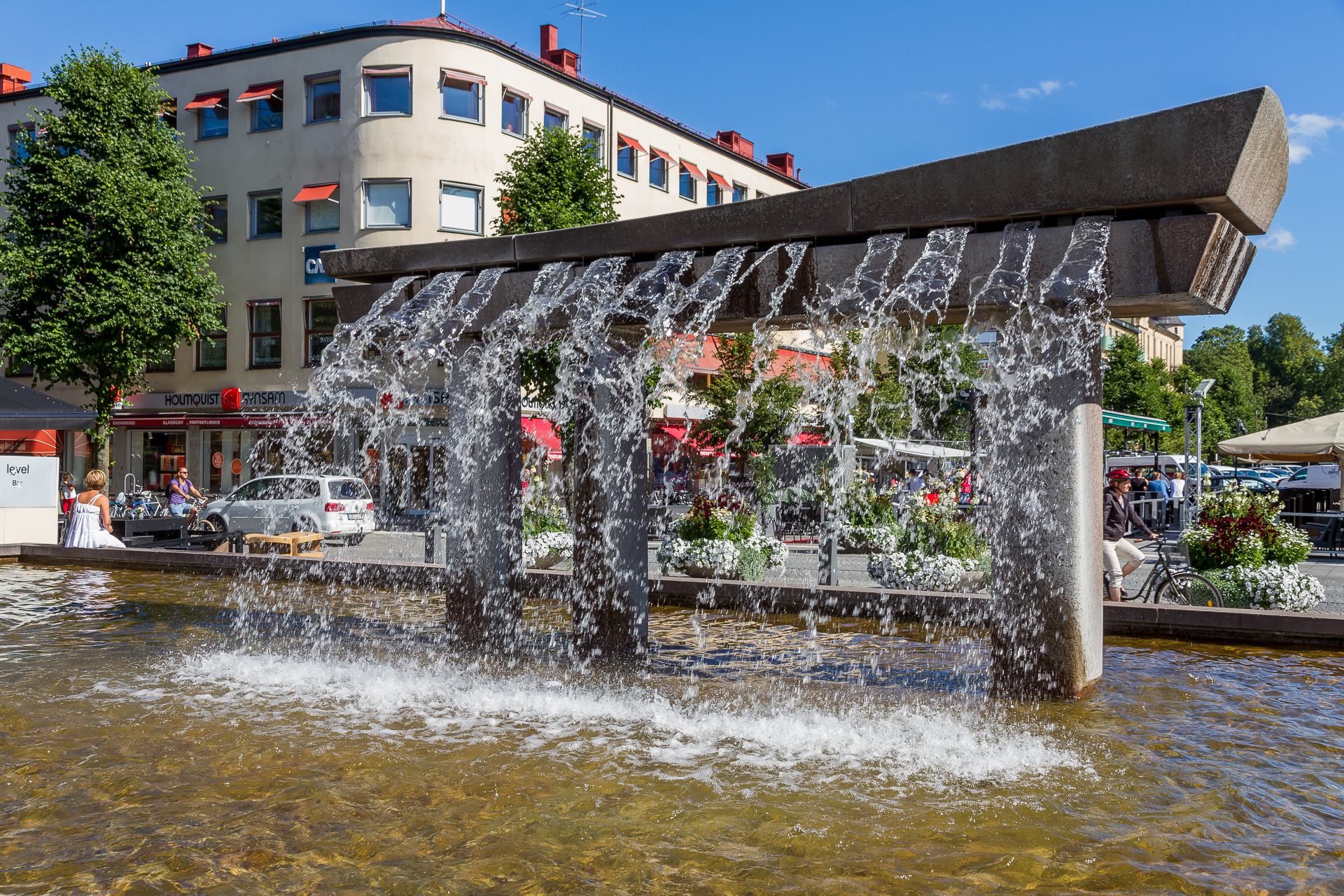Gamla normer nya former (Old Norms, New Forms)
The work is a fountain in the form of a stone portal with a transverse resting on three pillars. The middle pillar is closer to one outer edge. This forms a larger gap in the other direction, much like when a bone is broken off in a rough ridge. The work brings to mind the remains of an ancient triumphal arch. The portal is anchored at the bottom of a large basin with stone edges.
From a gap in the transverse loan, water is thrown out from a number of separate sources so that a water curtain is formed in several sections. Halfway down, these dissolve into a drizzle that finally meets the water surface.

‘The coffin’, as it is commonly called, must be one of Örebro’s most well-known artworks, yet the title of the work actually translates as Old Norms, New Forms.
The work is the result of a team effort between architect Laszlo Marko and artists Göran Lange and Jenö Debröczy. It is, in fact, a fountain, and best experienced during the summer months. The pool is full then, and water flows in a wide arc from the opening between the two uppermost stone blocks.
When the sculpture was unveiled in 1970, there had long been plans for an architectural and artistic transformation of the entire Stortorget square. The initial contest held in 1964 brought in 35 different entries. The entry by artist Fritz Sjöström and architects Ingemar Hultman and Lars Malmo was declared the winner. But local lawmakers weren’t in agreement, so a second contest was held in 1968 between the entries that came in first, second and third in the first round of competition.
Lange, Debröczy and Marko’s proposal for a new square environment won in 1968. Their sketch shows a shady canopy of leafy trees opening out around the fountain, but it was only the fountain that was ever completed.
The work immediately sparked debate and received harsh criticism. The official name – Gamla norms, nya former (Old Norms, New Forms) – stands out as a good summary of the sculpture’s severely carved shapes and the dissatisfaction they aroused among parts of the population in 1960s and 70s Örebro. It prompted a recurring demand for fewer modern experiments in form and more traditional statues in the square.
The ‘old norms’ mentioned in the title is not likely a reference to the critique against the work. The stone construction looks like a portal or a colonnade – one interpreter thinks that it resembles a Japanese temple gate. Perhaps the work’s creators meant that they were giving new forms to old architectural elements. What do you think?
Konstverk: Gamla normer nya former (Old Norms, New Forms)
Konstnär: Jenö Debröczy, Göran Lange, Laszlo Marko
År: 1970
Material: Cut granite
Placering: Stortorget
Ägare: Örebro Municipality
Konstverkets position på karta
Publicerad:
Tack för ditt svar!
Berätta gärna vad vi kan göra bättre på den här sidan för att förbättra webbplatsen! Vi har ingen möjlighet att svara, men dina synpunkter är värdefulla för oss. Tänk på att inte skicka in personuppgifter. Om du vill ha svar på en fråga kan du istället använda formuläret ”Lämna en synpunkt”.
Om du ändå skickar in personuppgifter via detta formulär hanteras uppgifterna av Kommunstyrelsen och kan eventuellt lämnas vidare till annan verksamhet inom Örebro kommun i syfte att förbättra vår service.
Här hittar du mer information om hur vi hanterar personuppgifter.
Tack för ditt svar!
Du har nu hjälpt oss att förbättra orebro.se
